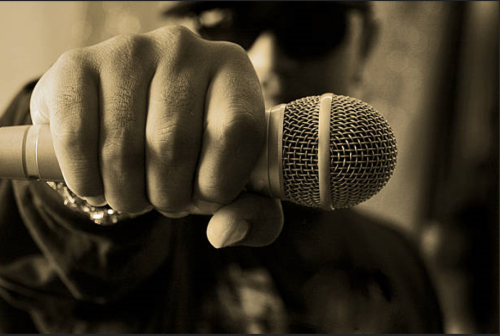From Breakdancing to Trap: The Subgenres and Cultural Pillars That Define Hip-Hop’s Diversity
The world of Hip-Hop is as intricate and unpredictable as a game of chance. Much like someone trying to predict the next big thing in the sports world using a bet app download, anticipating the next evolution within Hip-Hop has always been a mix of skill, knowledge, and intuition. From the streets of the Bronx to the global stage, the genre has transformed, spawning various subgenres and assimilating numerous influences. This article delves into Hip-Hop’s many shades, highlighting its various subgenres and the cultural pillars that have defined its trajectory.
- The Origins: The Four Pillars of Hip-Hop
Before delving into the subgenres, it’s imperative to recognize the foundational elements of Hip-Hop. These are:
- DJing: Pioneers like DJ Kool Herc and Grandmaster Flash manipulated records to isolate and elongate the ‘breaks’, giving birth to breakbeats. This technique created a continuous dance rhythm which became a hallmark of early Hip-Hop.
- MCing/Rapping: An MC, or Master of Ceremonies, would host Hip-Hop events, introducing DJs and setting the tone. Over time, MCs started delivering rhymes over beats, leading to what we now know as rapping.
- Breakdancing: A street dance form, it began in the Bronx and incorporated movements from various influences, including martial arts, gymnastics, and traditional African dances.
- Graffiti: Visual art became a form of expression and rebellion, with artists using urban landscapes as their canvas.
- Golden Age Hip-Hop (1980s to early ’90s)
Characterized by its diverse styles, innovation, and influence from jazz, funk, and soul, this era gave us legends like Public Enemy, Run-D.M.C., and A Tribe Called Quest. The period was marked by complex lyricism, social activism, and the use of samples from older records.
- Gangsta Rap
Emerging in the late ’80s, this subgenre, led by artists like N.W.A. and Ice-T, was characterized by its explicit lyrics which often provided a raw, unfiltered look into the realities of street life, violence, and systemic oppression in inner-city America.
- East Coast vs. West Coast
In the ’90s, a rivalry brewed between the East and West coast scenes. While both coasts produced extraordinary talent and hits, they were also marked by beefs and conflicts, some of which tragically escalated to violence.
- Conscious Rap
This subgenre emphasized social issues, positivity, and African roots. Spearheaded by acts like Mos Def, Talib Kweli, and Common, conscious rap focused on enlightening and educating through lyricism.
- Crunk & Dirty South
Originating from the South, artists like Lil Jon and OutKast blended energetic beats with southern vernacular, giving rise to hits that dominated clubs and airwaves.
- Trap
Emerging from the early 2000s in the South, Trap, characterized by its hi-hats, 808s, and rolling snares, spoke about the struggles and triumphs of street life. Artists like T.I., Gucci Mane, and later, Migos, became its flagbearers.
- Alternative and Jazz Rap
With artists like De La Soul, The Roots, and Kendrick Lamar, these subgenres intertwined hip-hop with jazz, funk, and alternative music elements, creating layered, sophisticated tracks.
- Drill
Originating in Chicago, Drill, led by artists like Chief Keef, focused on raw, aggressive beats and lyrics about violence, drugs, and the tough realities of inner-city life.
- Lo-Fi Hip-Hop
A more recent phenomenon, Lo-Fi blends calm, mellow beats with classic Hip-Hop elements, creating music perfect for relaxation and study. It often finds its audience through streaming platforms and YouTube.
- Cultural & International Expansion
As Hip-Hop’s popularity soared, it assimilated sounds worldwide, from the UK’s Grime scene, led by artists like Stormzy and Skepta, to K-Hip-Hop in South Korea.
The Continual Evolution of Hip-Hop
In a world that’s perpetually evolving, with cultures intermingling more than ever, Hip-Hop stands out as an exemplar of how art forms can capture the spirit of the times. It’s not just a genre; it’s a cultural movement, a voice for the voiceless, and a canvas for countless artists to tell their stories. From its inception in the marginalized neighborhoods of the Bronx to its global resonance today, Hip-Hop’s journey has been one of resistance, reinvention, and resurgence.
Each subgenre, whether it’s the political undertones of conscious rap or the evocative narratives of drill, contributes to the grand tapestry that is Hip-Hop. This rich diversity showcases its innate capacity to adapt, evolve, and resonate with audiences from every walk of life. But beyond the beats, lyrics, and dance moves, it’s the spirit of community and unity that underpins the genre. Graffiti artists, DJs, MCs, and b-boys and b-girls — they all emerged from shared spaces, where collaboration and creativity were the currencies.
As Hip-Hop continues to assimilate global sounds and influences, from the vibrant beats of Afrobeat to the rhythmic cadences of Reggaeton, it serves as a testament to its universal appeal and timeless nature. The genre, in all its multifaceted glory, is a reminder of music’s unyielding power to transcend borders, challenge societal norms, and give voice to collective hopes, dreams, and struggles.
In the decades to come, Hip-Hop will undoubtedly birth new subgenres, integrate more cultural influences, and continue its reign as a dominant cultural force. But its core ethos — that of storytelling, resistance, and community — will remain unwavering. It’s this spirit that has ensured Hip-Hop’s indelible mark on the global cultural landscape, and it’s this spirit that will propel it into the future.



